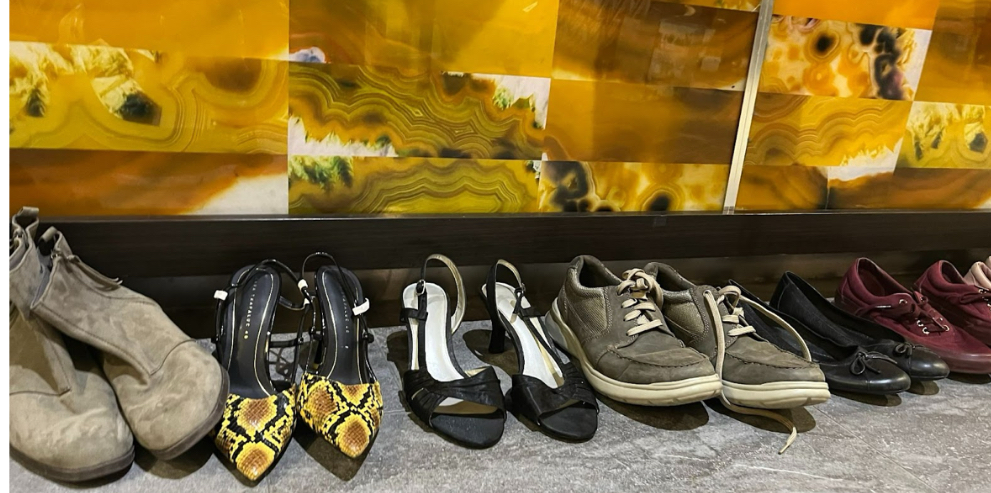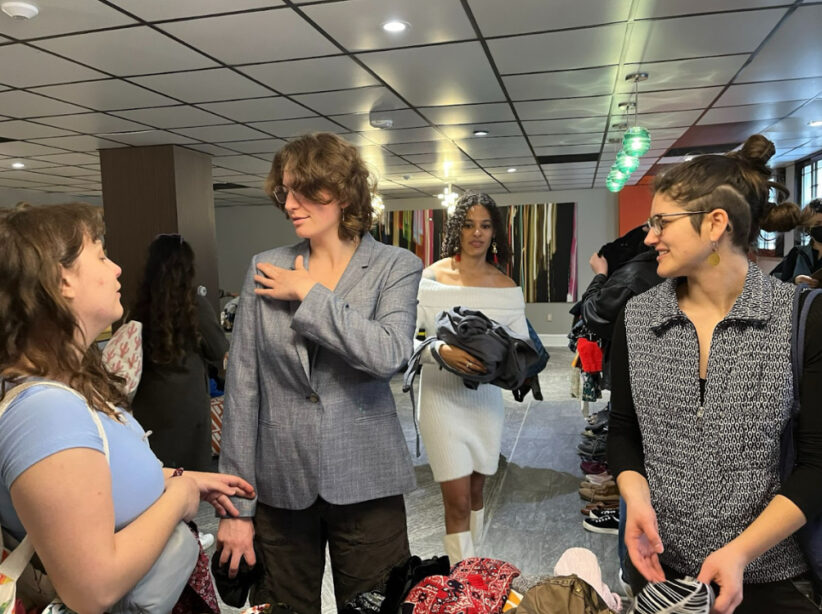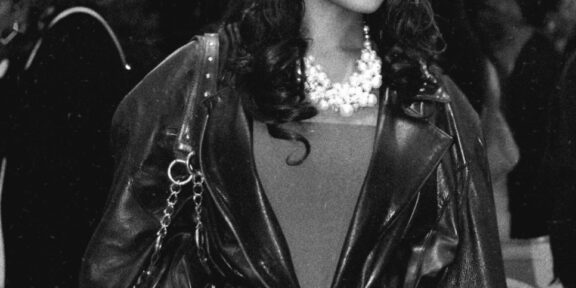By Makenna Underwood
On Feb. 24, Lavender Lotis, an organization focused on community wellness, hosted a clothing swap party with the goal of creating an eco-friendly, affordable option for residents who want to shop sustainably.
The clothing swap party was hosted within the community center of Zen Apollo, an apartment complex in Northwest Washington, where attendees were encouraged to bring clean clothes to swap with others.
Monique Bruce, founder and director of Lavender Lotis, said she created the event to provide more sustainable and enjoyable shopping.
“I love clothes, and I want to style them myself, so let me bring in some Black girl magic and utilize the community center in my building to have a clothing swap here,” she said.”I have an amazing community center.
“It’s beautiful. It’s indoors, and there are plenty of couches.”
The event, which is hosted once a month, was not just about sustainability and fashion but also about self-expression and mental health, Bruce said.
The organization, created to provide preventative healthcare, sees clothing swap parties as ways to help attendees find outfits that reflect their personalities, said Bruce.

An array of shoes sits in front of a counter. Bruce encouraged attendees to bring unisex items to optimize the shopping experience for all genders. (Makenna Underwood/HU News Service)
“They could come in and find an outfit that really fits their personality, and that’s important for your mental health, Bruce said. “How you feel is how you’re going to move around for the rest of your life.”
Bruce said she encourages bringing unisex clothing and has a system for shoppers.
Items are divided into different groups, such as dresses, shoes, pants, sweaters, and shirts. Shoppers must bring a clean item of clothing in order to swap clothes. Everything is free.
Within an hour, attendees filled the space with bags of clothing ready to exchange.
Attendee Betsy Pray, who said she tries to thrift and attend clothing swaps often, believes that if she buys an item of clothing, she must give away another item of clothing.
She said the event allowed her to shop for a wider variety of clothes while giving back to her community.

Shoppers look through a variety of shirts and sweaters. Betsy Pray, an attendee, was excited to see many items from which to choose. (Makenna Underwood/HU News Service)
“I was excited to be at a bigger swap where I could probably find more selection,” Pray said. “I like the idea of a clothing swap because [of] the chance to give stuff away and kind of knowing that it’s going into a good place.”
Alicia White, the executive director and founder of Project Petals Inc., an environmental and climate organization, said she believes clothing swaps can help combat fast fashion.
White thinks the trend contributes to a newer trend called slow fashion–a way of shopping that emphasizes buying high-quality clothes that will last instead of buying poor-quality clothing that would need to be replaced more often.
“A lot of people don’t know that more than 10% of emissions come from the fashion industry,” White said. “[Clothing swaps] are a really great way to promote sustainability, and they’re also a great way of promoting slow fashion.”
White also encourages consumers to thrift and attend clothing swaps since “nothing has to be emitted” for people to attend.
Bruce shares the same sentiment. She said she believes that events are and will continue to be in demand.
“People already want this. No one’s doing it, and that’s the problem,” Bruce said.
















